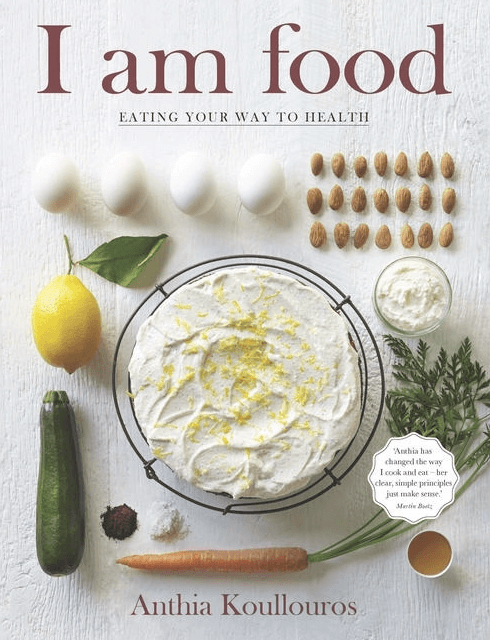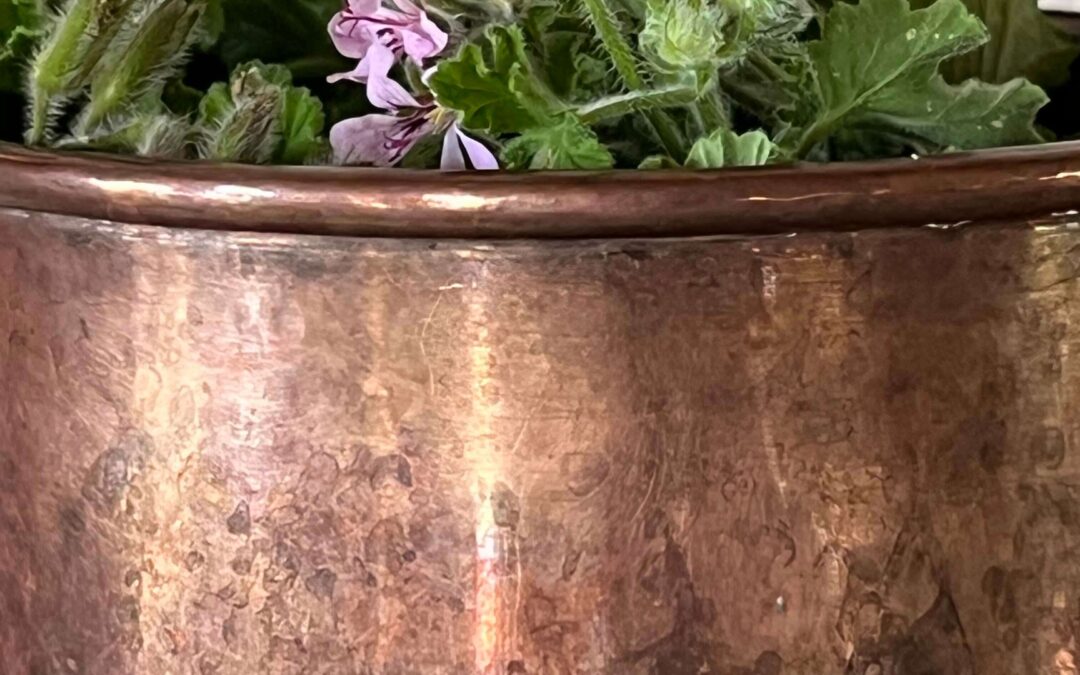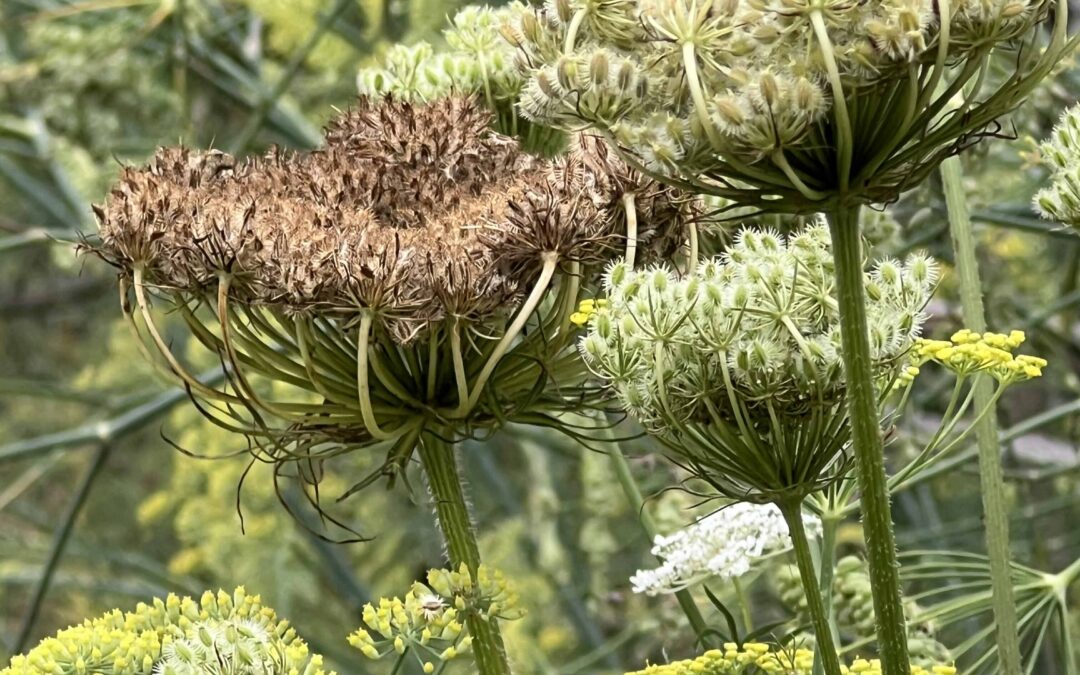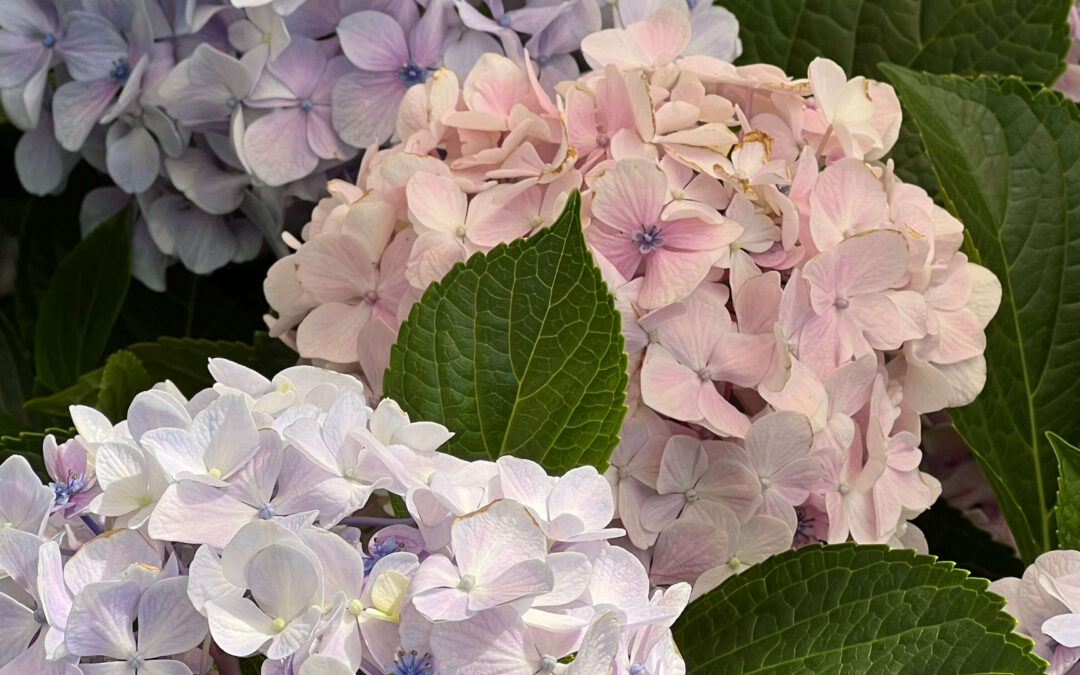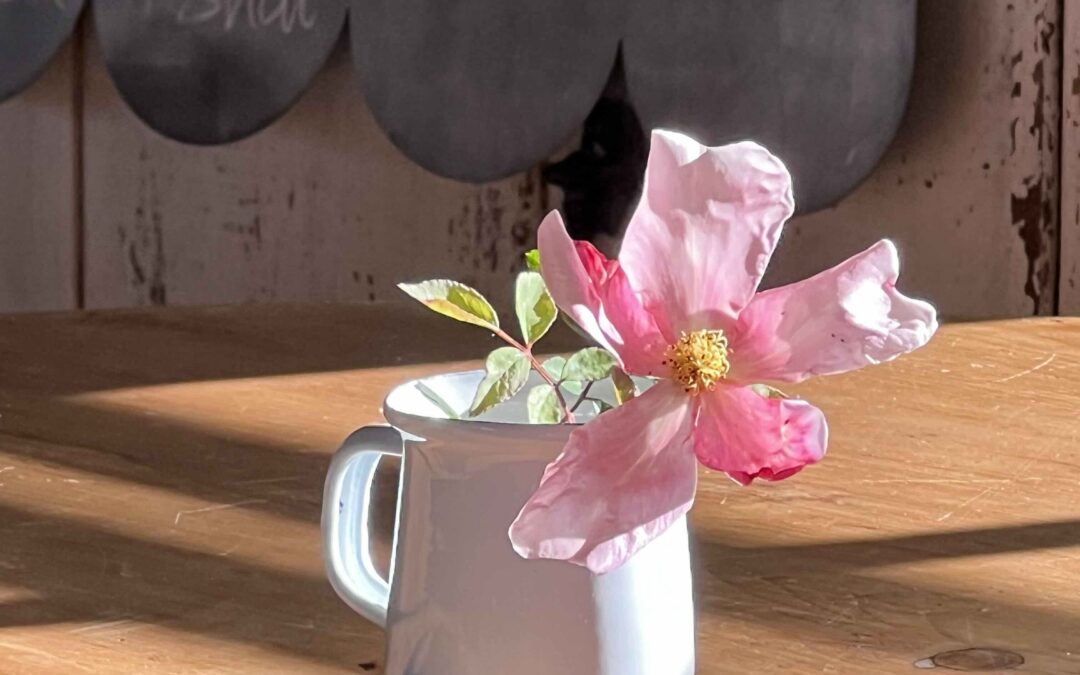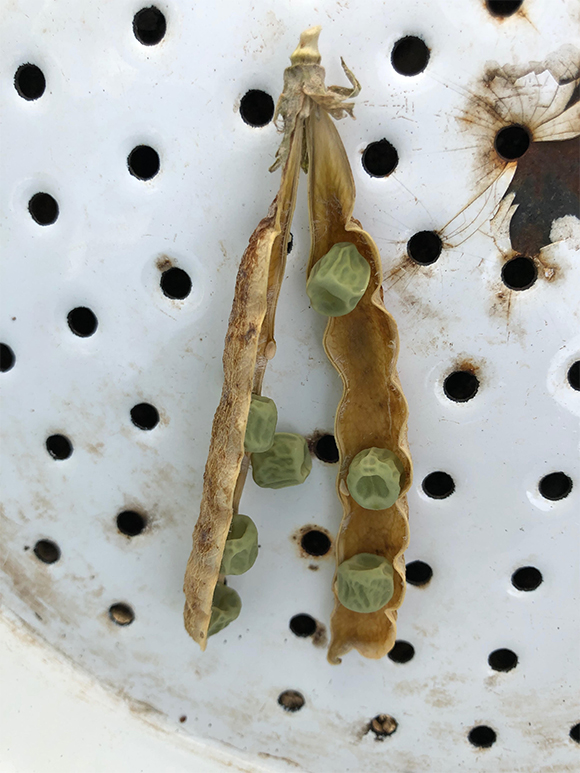
Play Podcast
It’s the beginning of April, a hint of autumn’s in the air, with seed in all its beauty everywhere….
What a difference a shower or two of rain can make…the dust washed from foliage and flowers, fruit and veg; the land shimmers, glimmers and sparkles in the golden autumn sun. As we ricochet between running for cover and extra layers; then stripping off in resuming heat; new growth thrives. And although the dams may not contain even a millilitre more water; the land feels revived. Each morning the grass is wet underfoot with dew; and after a shower of rain; a shingled roof, the compost heap and even plants let off steam as the day warms anew.
At this changeover time in the season, activity abounds. Tasks are many, big; and as each is completed, a sense of achievement follows….combined with that of hope.
While we consume the bounty of last season, I’m placing all my hope and focus now in what’s lies ahead.
But let’s begin here with a celebration of what we’ve enjoyed from all the effort put into last season’s prep and nurture…
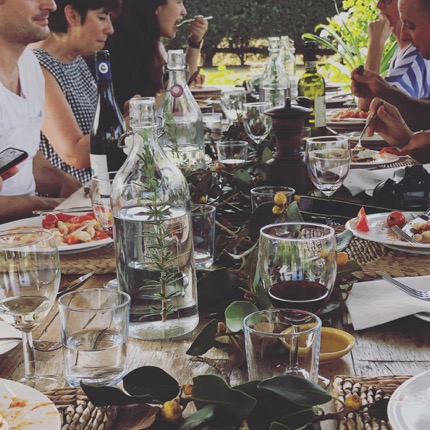
Because the purpose of it all is to end up with this: food, feast, friends…be they our personal ones, or event participants. The purpose of the growing of course, is to eat….to feed us with the very best organic produce I can grow; and to share it with whoever joins us for the experience.
The joy for me though, lies too (as I’m sure you all know by now) in the journey it takes to get each morsel this far, whether from seed to plate, or seed to seed; and the sheer beauty each seed takes in its path along the way, is what creates the garden.

On the morning of Trisha Dixon’s Mediterranean Drifters and Dreamers event, I asked Thalia to pick all the bags of red Muscat grapes from around the house-verandahs, while I climbed a ladder to collect armloads of olive branches to drift down the long lunch-tables. We spread the grapes on flat wicker baskets to dry before I tucked them into the olive branches for everyone to enjoy during lunch.
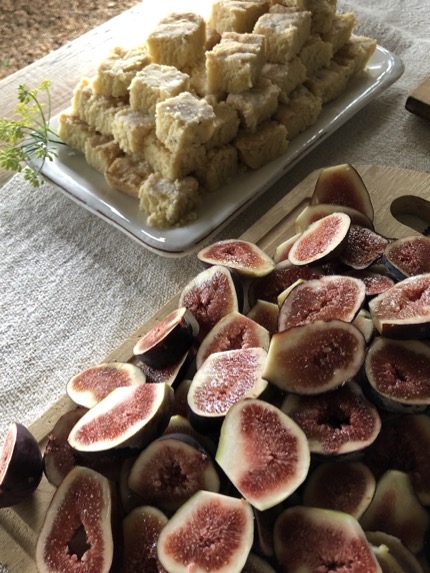
And then, there were all those figs too. Sliced, they topped a scoop of Clementine ice cream, accompanied by a little block of fennel-seed shortbread (I replaced the lemon zest Aaron suggests in his recipe from The Great Dixter Cookbook with…you guessed it…fresh fennel seed!).
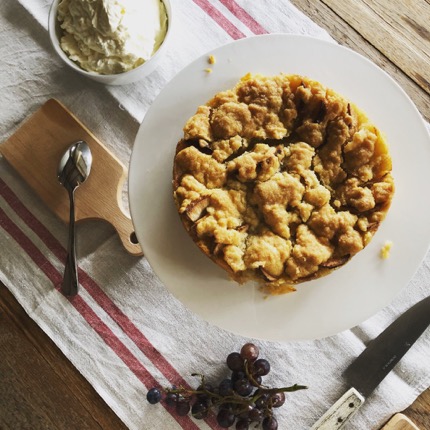
Then I made ‘Angela’s Apple Cake’ again, from Emiko Davies‘ ‘Tortellini at Midnight’ for a group of garden visitors. I can’t believe I’m still making cakes from our own apples! This beauty is best served warm, on Emiko’s advice, with a good dollop of fresh cream.
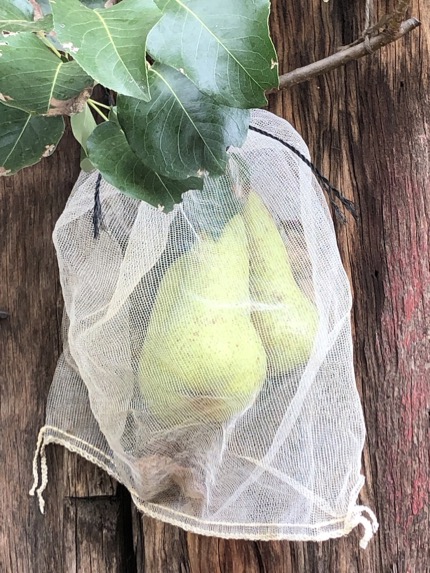
I picked all the pears from the Beurre Bosc tree that’s espaliered against the north-east facing wall of the Barn.
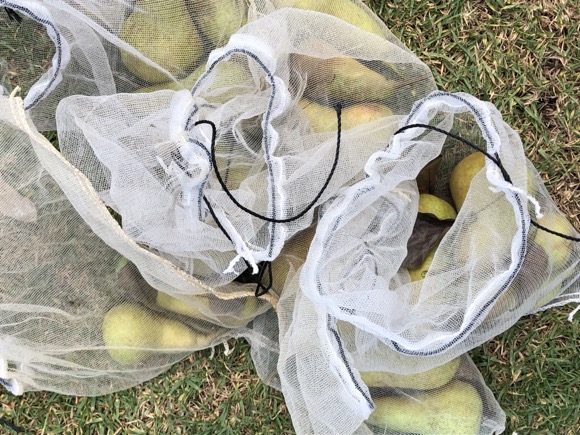
Thanks to using the individual net bags, I’ve never had so many pears to pick before! It’s important to pick pears when they come away with ease from the branch before they’re ripe, rather than allowing them to ripen on the tree. Thanks to images, I can now tell you that it took just under three weeks for them to ripen to perfection!
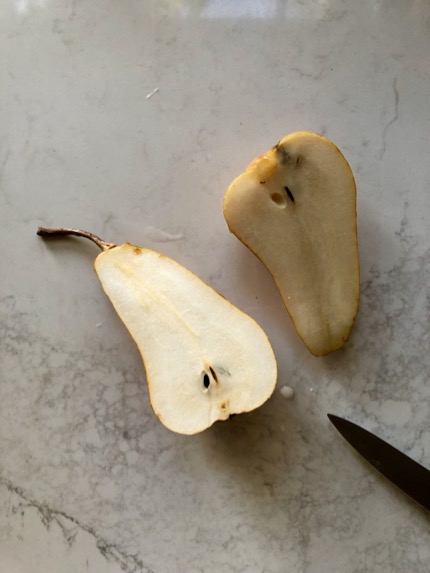
Although I poached many of them, so we could enjoy them with yoghurt for breakfast, we ate our fill of them fresh and unadulterated. As with most things grown in season; they truly need nothing done to them at all.
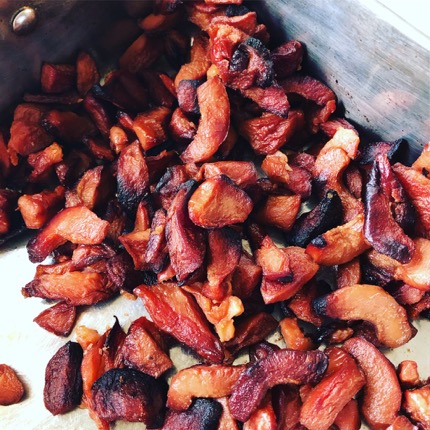
Quinces however, are an exception! Hard as rocks, you need a serious knife to tackle them! I’d rather have left these on the tree much longer to ripen; and the ones that are netted are still clinging on; and hopefully for some time yet.
But when that flock of unruly birds descended and began ripping into the tree and all its bounty, there was nothing for it but to shoo them off, collect the fruit they’d sent in a flurry to the ground, along with the rest that I’d left exposed to the elements (I’d run out of bags!). Then, I left the fruit to sit on the verandah table for a couple of weeks, and once cooked, they were as delicious as ever…hopefully a tantalising taste of what’s to come.
I decided last year, to try cooking them without the quantity of sugar that’s often suggested with quinces, and to see what would happen if I tossed them in olive oil instead. The result is a different texture, the taste perhaps more savoury; it’s just pure, pure quince….and this is the way we’ll enjoy them from now on. Delicious with cheese or yoghurt, in the case of the Biodynamic Workshop, with Clementine ice cream. But it’s hard to stop eating them on their own! They are simply sublime.
Peel; toss into a bowl of acidulated water to stop them from browning (as it takes ages to peel them). Halve, quarter, then toss with olive oil in a roasting pan; cover with foil and bake at about 180 – 200 C for around 4 hours. Remove the foil (carefully – hot steam will be trapped) and leave in the oven for a bit longer, until the beautiful russet colour has properly developed. You could even turn off the oven and leave them overnight.
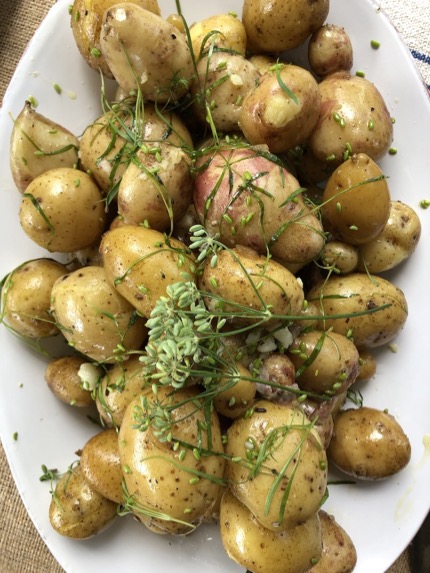
Then there were all the potatoes of course! In fact, we ate the last of ours at the Biodynamic Workshop. These are the ones that came out of that corner of the guild bed, where you may remember I was trying to improve the soil. Well…it yielded a crop of potatoes, that’s for sure!

Then, there are all those tomatoes I’ve been rabbiting on about….the ones I poured so much effort into coaxing along all spring and summer long. How exquisite they look in early autumn’s fast-fading afternoon sunlight.
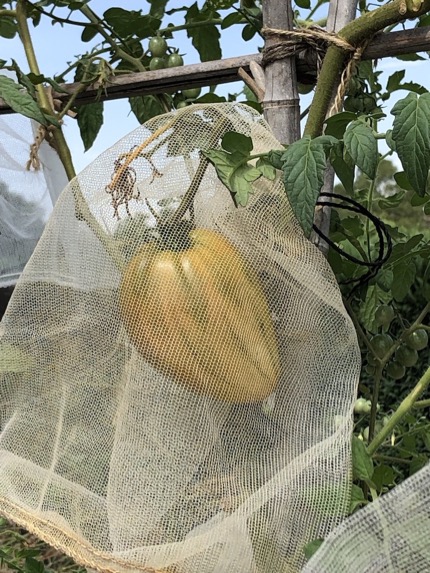
Although supposedly safe under net, it’s at this stage I tend to collect them…..
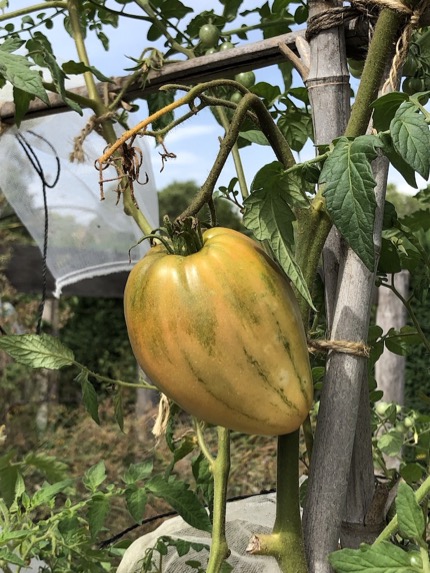
Before they’re highly coloured and bound to attract more attention: they ripen perfectly well inside, safe on the kitchen bench!
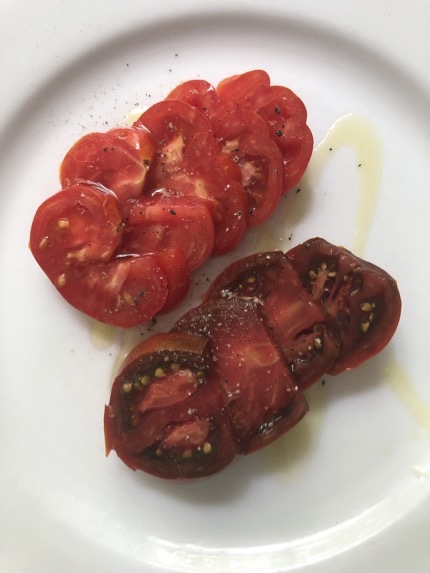
And all the effort really has been worth it! Surely there’s nothing like a fresh tomato, sitting atop a slice of bread (yes of course, Belinda Jefferey’s Pumpernickel Soda Bread is perfect!) or toast, a smear of chèvre or labneh, or even butter….drizzled with olive oil, scattered with basil….or fennel seedlings! Just add a twist of pepper….
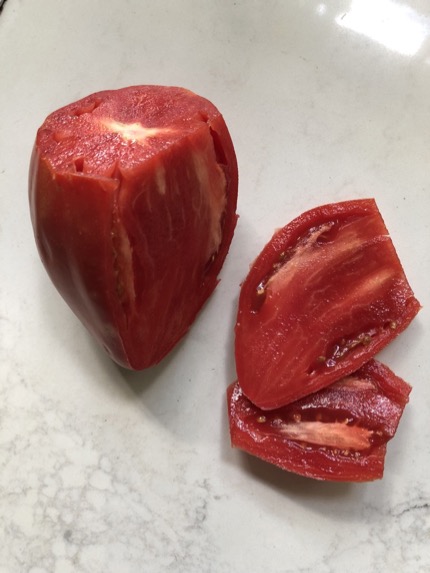
I have to confess to eating a lot of fresh tomatoes these past couple of months!
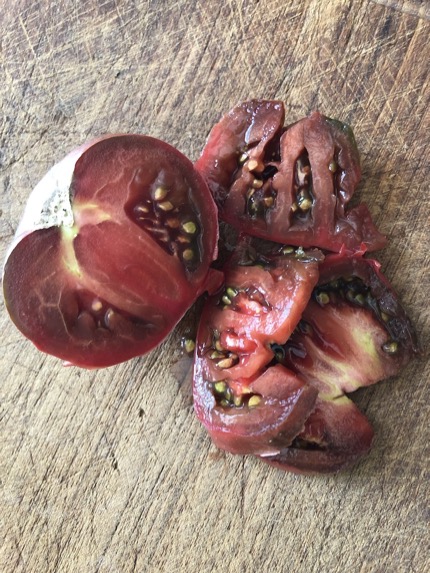
This is the main reason I grow the large varieties….the ones that ooze flavour (and juice that drips down your chin!).
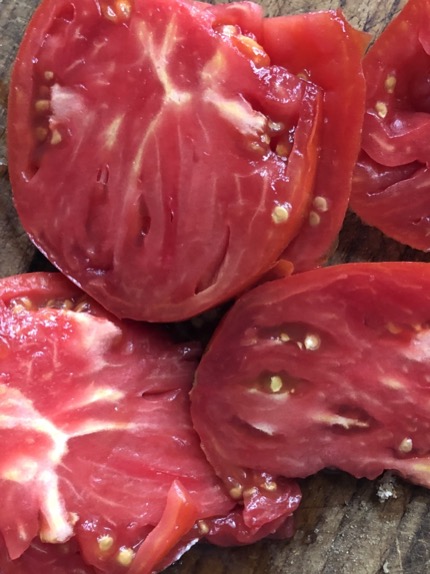
Each has a flavour of its very own. I tend to favour the purple and black varieties (I find them less acidic), but of the dense reds, Hungarian Heart is a longtime favourite, while this year, Arthur’s Big Greek has really won over my taste buds! The flesh is so incredibly dense; it’s gone straight to the top of my list and I’ll be heading to Tim’s Garden Centre at Campbelltown next spring to get hold of a couple of seedlings to plant in pole position on the tunnel next season.
But now that all these beauties are coming to an end; and I have quite a number ripening on the kitchen bench (more than we can possibly eat fresh); I’ll turn some into a spectacular batch of autumn tomato soup! Watch this space next time…
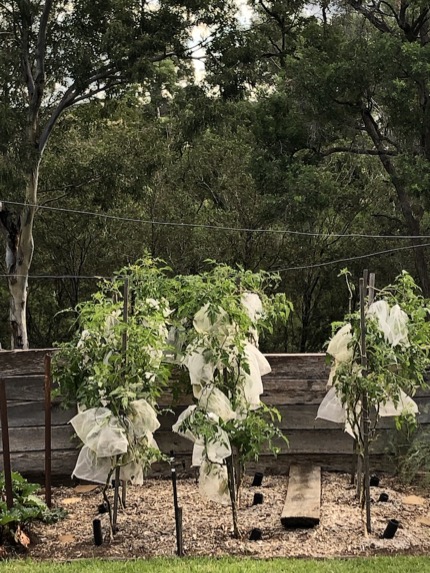
The ones I don’t eat fresh (though there’s no reason you can’t) are the San Marzano’s, which I grow more of than any other variety. But I use them as cooking tomatoes. They’re the ones down the back, growing on tomato stakes in the old-fashioned way, and the number of fruit they’re producing, as well as their size and weight, is getting better with each passing week.
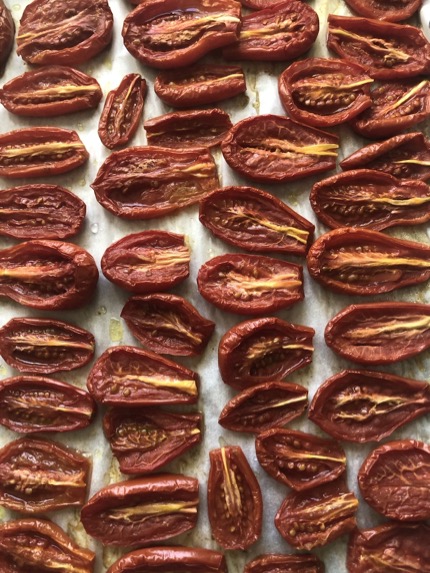
These are the ones I like to eat halved and baked in the oven; drizzled with olive oil, a little sea salt, a twist of pepper….at around 180C for a couple of hours I guess. Now that they’re arriving in good numbers, I can bake the odd tray-load at a time, then set aside to cool before freezing between sheets of baking paper. (You can always turn off the oven and leave them overnight to dry out a little more….same as with the quinces).

Although they don’t appear in great quantities, the capsicums that do eventuate have an intense flavour and rather different texture to the ones you buy in the shops…
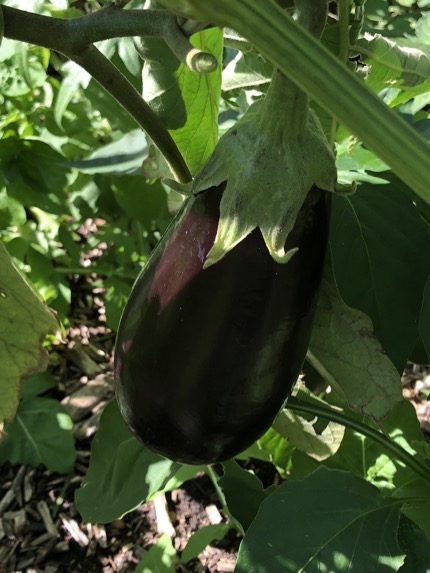
And aubergines have been coming in at a reasonably steady pace all these last months. The plants on the traditional side are just about past their use-by date now, I must admit…the bed they’re in has been a tough one; exposed to the northern elements all summer long; and now, the ones hiding amongst other foliage on the guild side are faring better.
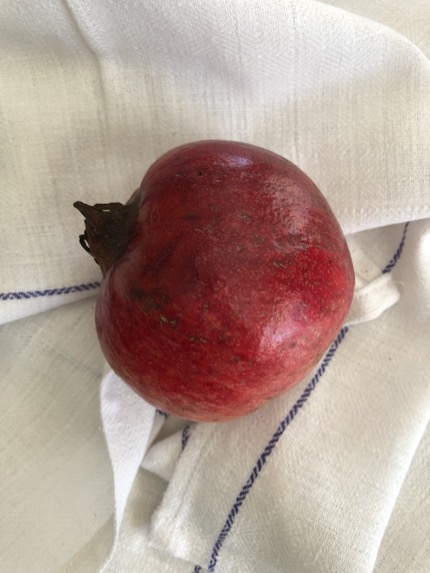
For all it’s outward beauty, I just can’t seem to get the timing for when to pick a pomegranate right!
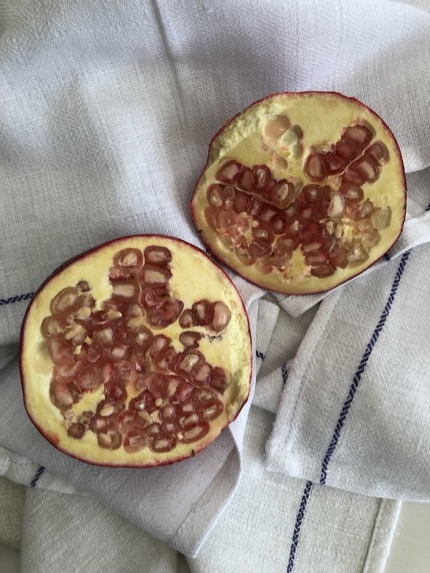
I thought this one would be ripe for sure! But no….so I’ll wait awhile longer before I go checking again….
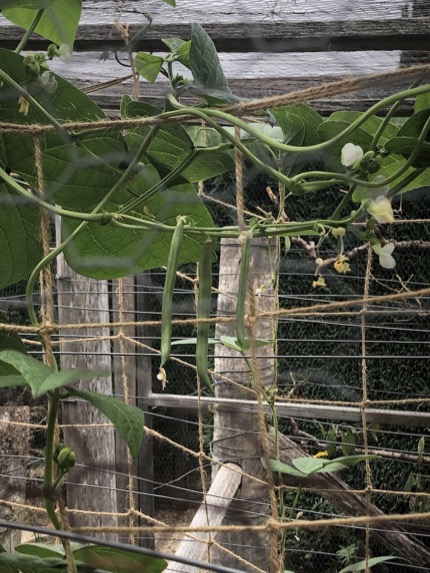
Then there are the beans….well….helleluljah! I got there in the end! I can’t even remember what these ones are called….by the end of the saga, I picked up a packet at the garden centre of anything that looked like a green bean!
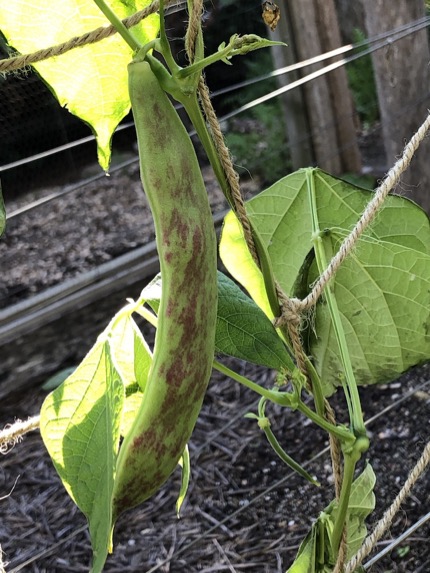
But how excited I am that I finally managed to coax the Speckled Cranberries to produce even a handful….how I love their pink streaked pods, but this is only the beginning….I have images of basket loads of them in years gone by and you wait ’til I show you next time! If you haven’t grown them before they’ll be top of your list for next year!
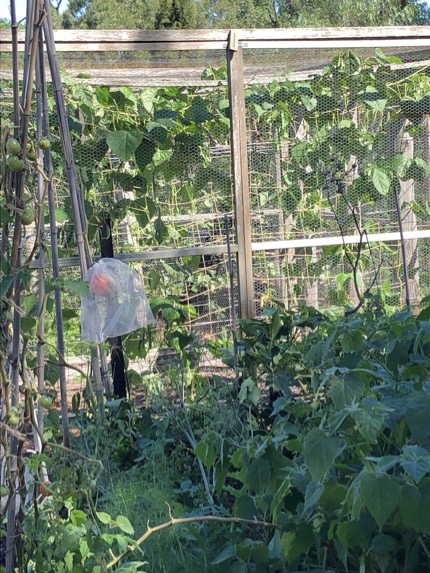
Caged in…perhaps that’s the only way I’ll get beans in the future…we shall see…
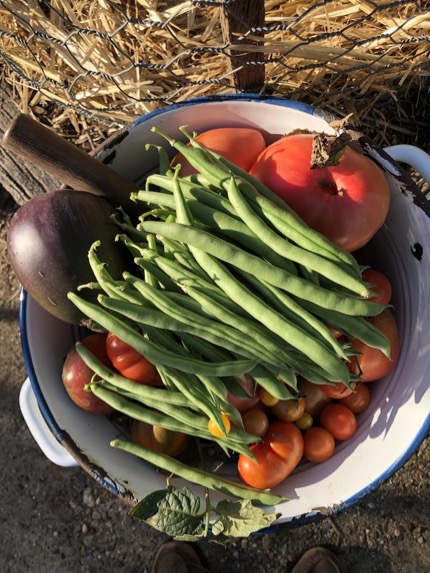
In the meantime, I’m just delighted that beans are joining the collection on my evening round…
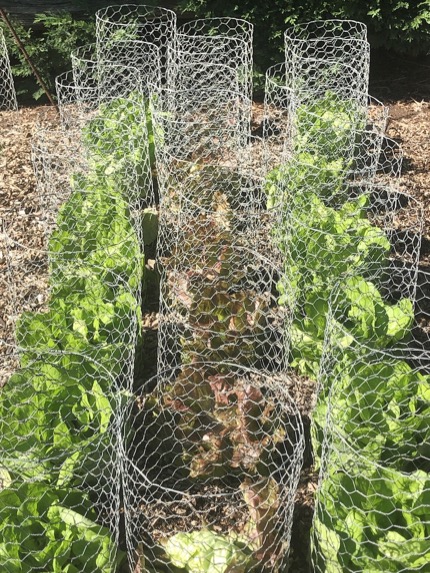
How excited I am that lettuces are back in abundance! Up ’til this week, these have been covered with net, to save them from the sun, but now the nets are off; and fine leaves of hearting Butter and Mignonette are back in our salad bowl.
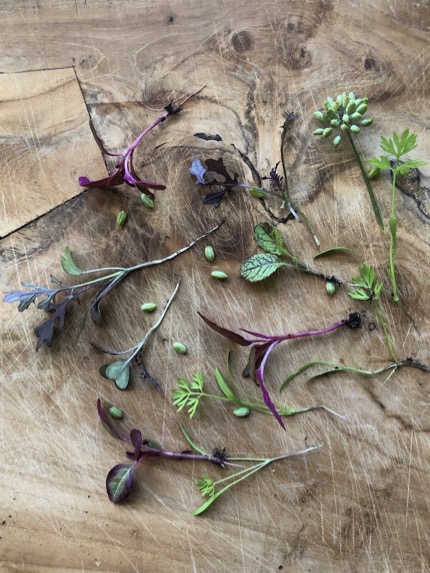
For all the mainstream, expected produce I’ve included above; it’s the unexpected, self-sown surprises, that I sometimes think I value most of all. Certainly you can only enjoy these beauties if you grow them yourself.
Of course, they’re not surprises here anymore….I’ve been delighted by these little jewel-like finds for years. In some combination or other, they join whatever it is we’re eating…open sandwich; leaf salad, or scattered over whatever’s for dinner. Right now there’s a happy combination of leaf amaranth, red elk, baby giant red mustards, fennel seedlings and budlets to choose from. How they go to making everything look pretty, as well as adding a punch of flavour to whatever’s in store.
These are the result of allowing plants to grow through their full cycle, to mature, flower, become good companion plants in their own right; to create a wild and romantic vision along the way, before drying out, spilling their seed and beginning the process all over again. The wonder of it never fails to enthrall….

Then, there is the garden as medicine chest. I’m going to get Anthia Koullouros back here for a workshop in the spring, so she can talk about just this topic, but I’ve been popping an elderberry or two on my daily round….the odd strawberry if I’m lucky and so far, only one Cape Gooseberry….but they’re coming….and each is a natural little hit of vitamin C, which is welcome – especially at this time of wildly fluctuating temperatures!
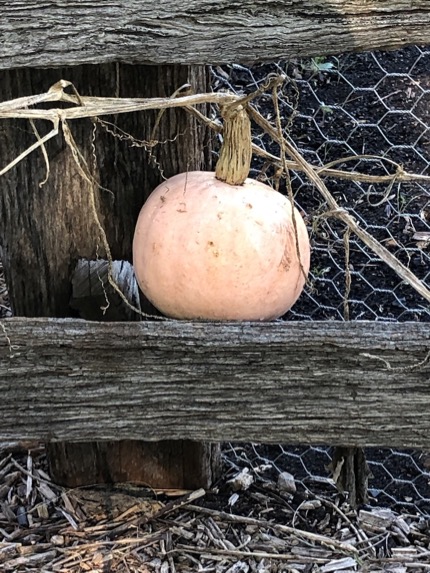
Something I haven’t mentioned a great deal about yet, except to say they’re romping away here and there…are pumpkins! I’m never sure I’ll get a good haul….how they struggle through the summer months; but there are a few maturing now.
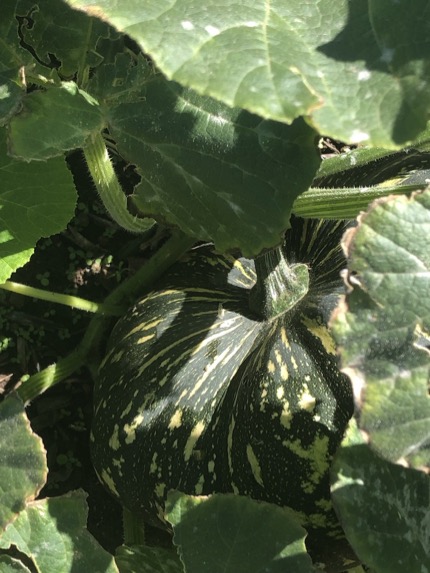
The Japs are always slow…in fact I find that pumpkins just are slow to grow here….they tend to set fruit late, but I’m excited about those appearing just now…in secret, almost overnight! So I’ll save pumpkins for next time!
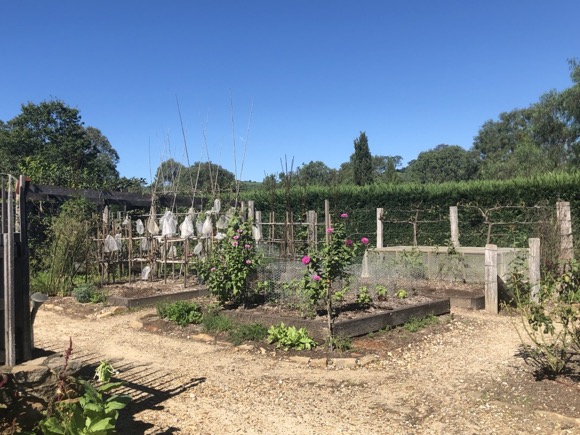
But back to those jobs…all those tasks completed these last weeks! The decks have been cleared….and after the mayhem and chaos at the end of summer; to be honest, although it needed to be done…it all feels a bit bare…and yet not neat and tidy enough! It’s betwixt and between, which is a stage that always has me feeling rather anxious….longing to pull the last of it all out and finish the job…but I must be patient. Afterall, there’s only so much one can do at a time!
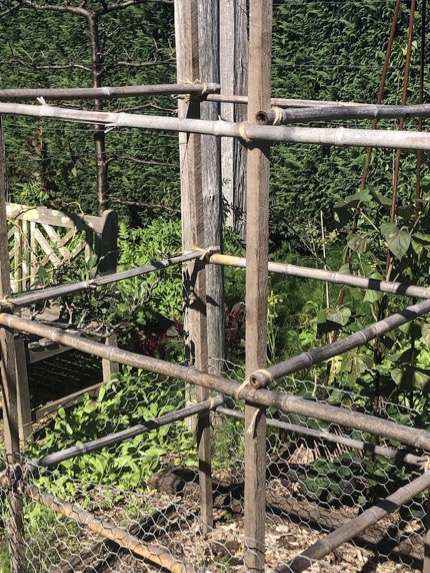
The most important job of all at this time of the year is to complete the broad bean structures…the framework that will contain those unwieldy tall plants with their tall, fragile, hollow stems that can all too easily, snap in the wind.
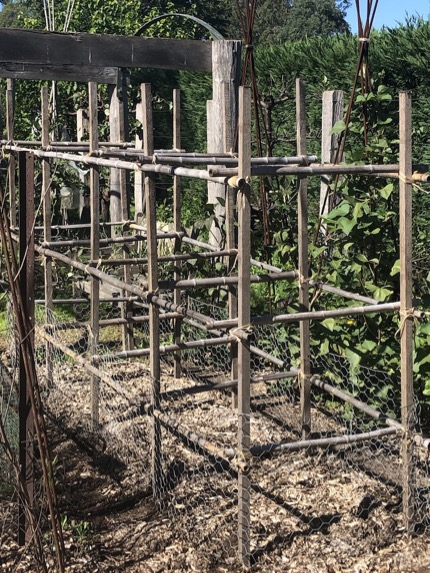
Growing contained inside their boxes; the broad beans can support each other as they rock back and forth, safely enclosed on all sides. I make one continuous structure, running the length of the legume bed on the traditional side, while I build individual boxes over on the guild side, that also contain five seeds each…sown in the shape of a five on a dice. Now that the building work’s done, hopefully there’ll be twenty signs of life emerging shortly from the earth!
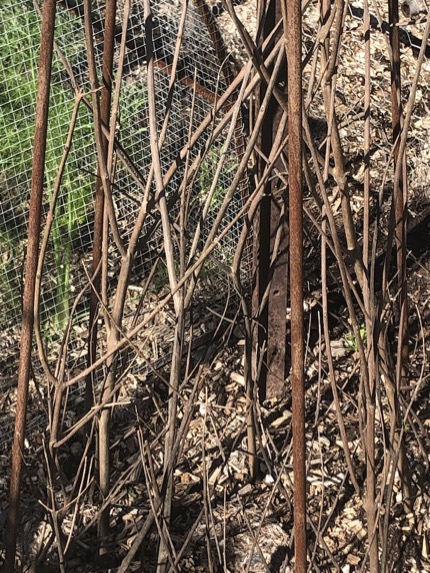
Next were the wigwams to erect for climbing peas. Easily done with those steel rods that plunge into the ground without much effort at all. Then, I’ve gathered together a whole lot of prunings, to use as ‘pea sticks’, and rammed them into the space inside the wigwam. I’m hopeful this will help on two fronts – a. to give some protection from pests (read bower birds!) to emerging seedlings and b. to give those first tendrils something to cling onto when they do begin tentatively sending them forth.
But given the dire situation here these days with those birds, I intend to place wire around the base of the wigwams as well. It won’t look great, and I’m hopeful it can just be a temporary measure, ’til the peas get established. But right now, I’m just looking forward to the seed germinating!
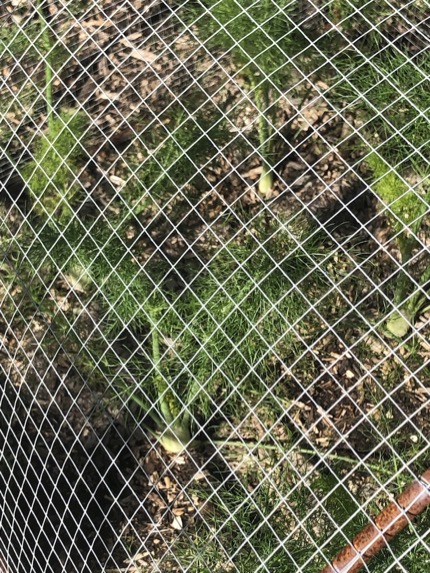
Between the two wigwams at the front of the bed, a wire tunnel protects the first of the fennel bulbs that are already showing signs of getting well established.
I find this layout for the legume bed works well….the continuous broad bean box down the centre; a wigwam to each corner and this space between them. Once upon a time, I used to plant more peas in this vacant space….some on a flat, woven panel. But if all the peas work, I’ll have more than enough, whereas space for extra fennel is a priority. Then….you’ll see, later in the season, as we eat the fennel bulbs, I’ll replace each with a lettuce.
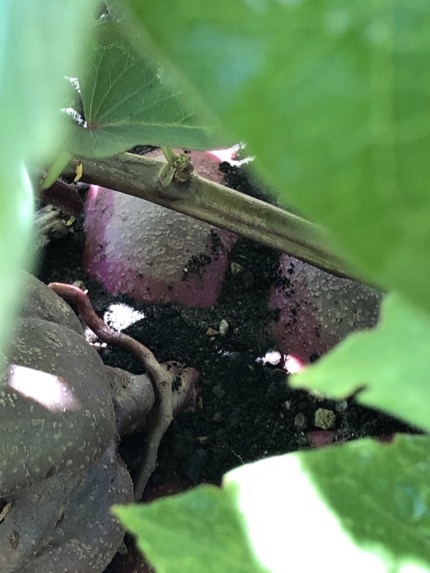
There is a problem with my old layout though, for the winter legume bed, as I mentioned in the episode. Well…it’s not the layout that’s the problem…for years I’ve run a bamboo tunnel down the back of the bed, parallel to the broad bean box. But ever since I began this lark of growing sweet potatoes on wigwams at the rear of the summer root veg bed (that preceeds the winter legume bed), I’ve given myself a rotational problem! The sweet potatoes are holding up the whole process.
Why do I do it? Don’t worry, I’ve asked myself the same question! It’s partly because I like the look of it through summer; and the sweet potatoes never worked ‘down the back’, where it wouldn’t matter in the least how long they stayed in the ground. But, if my memory serves me correctly, the sweet potatoes should be out in a month or so….and I should still have time to get a late sowing of peas in. (So I should stop being impatient!).
And if my memory is also right, I never have much luck coaxing my favourite shelling ‘Telephone’ pea into growing early in the season anyway, so….all things being equal, it should all turn out right in the end! (But I’m sowing Telephone’s elsewhere too, just in case!).
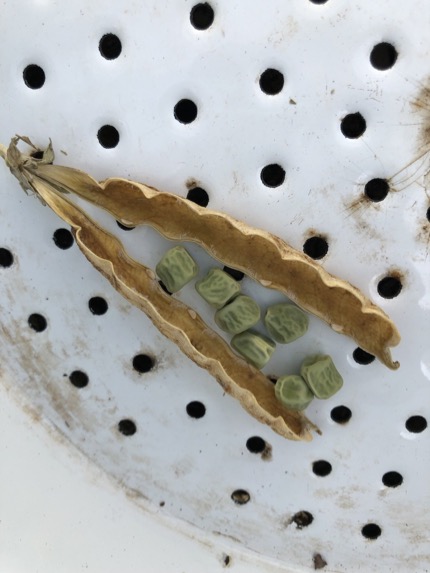
I’ve been storing the pea seeds, inside their pods, in a cool, dark place, since I collected them in the spring….right back in Episode One.
Isn’t the scallop detail of the pod itself simply enchanting? You usually find seven peas inside a pod….doesn’t that tie in neatly with the fact this is episode seven of the podcast? How funny….I do love synchronicity!
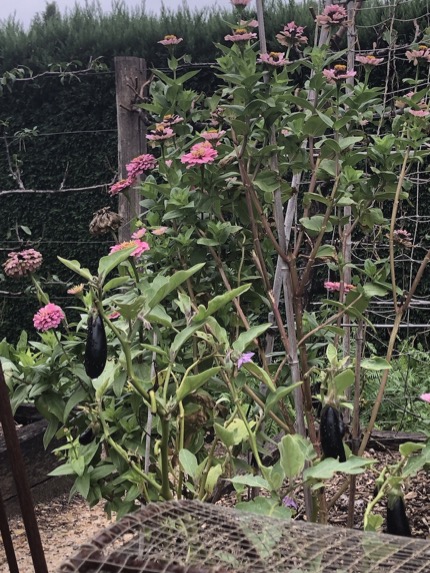
And so it was, that in last season’s legume bed; during one morning’s work, we went from this overblown delight….(I must try to remember to plant ‘Rose’ Zinnias next to aubergines again next season)….
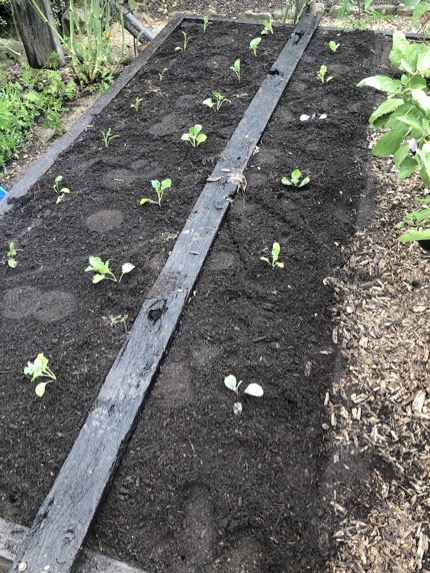
To this newly prepared bed.
Then very quickly…(because you know by now how I hate to leave my precious compost exposed to the elements)…

To this! As much salvaged hemp mulch was returned to the bed as possible, and it’s since had a top up of new (yes – there was enough to cover all of the compost!).
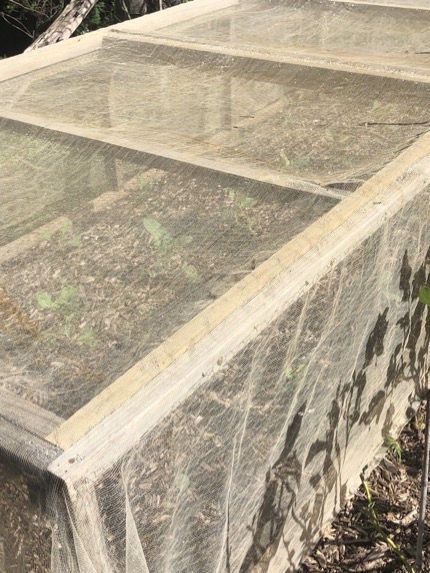
Then the precious new brassica seedlings were covered in a wire cage as quickly as possible; and later, with net as well! Because I want to prevent….
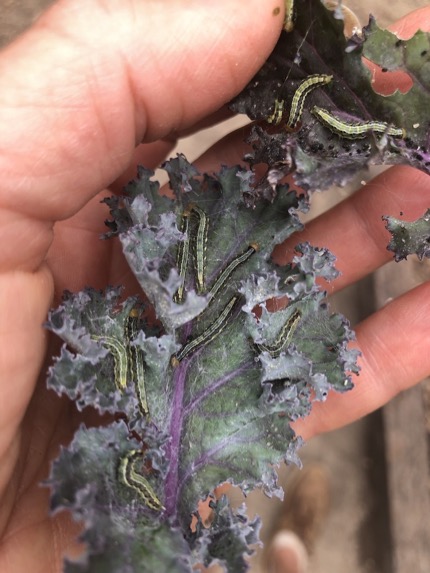
This from happening! Infestations of caterpillars hatching from the white cabbage moth can happen all too quickly (both these and the plain bright green caterpillars seem to belong to the moth) and brassicas are their favourite plants on which to lay their eggs.
These ones were on the old decoy kale I left in the guild bed through the summer, and they made a good feast for the chooks!

Of course, before any planting activity can occur in any of the beds; they are forked to aerate before having loads of compost added. As we’re usually pretty time-strapped, it’s often the case that we don’t separate out all the woody material that comes in from the garden as we add to a new heap (and anyway, I’m inclined to think woody stems create valuable air passages).
We do have a ‘chipper’ but it hasn’t been used for years. So….I’m inclined, instead, to ‘sieve’ the woody pieces that haven’t yet broken down, through a piece of wire (in a sturdy frame). Yes, it takes time, but at whichever end of the compost making process it is, beginning or end, it’s time! And this end requires no fuel!
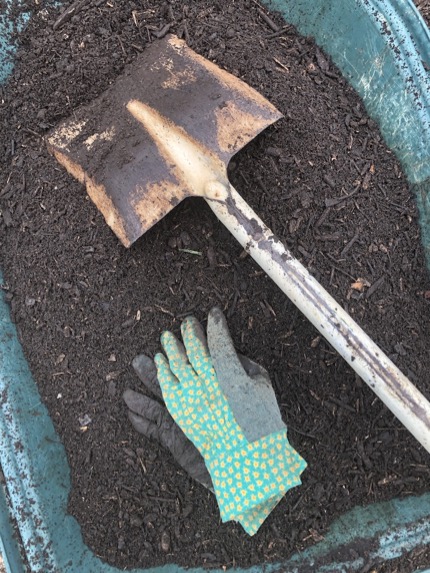
And this is the result, so I think it’s worth it….afterall….anything for the stuff in which our precious produce grows! Afterall, it’s we who are eating the end result.
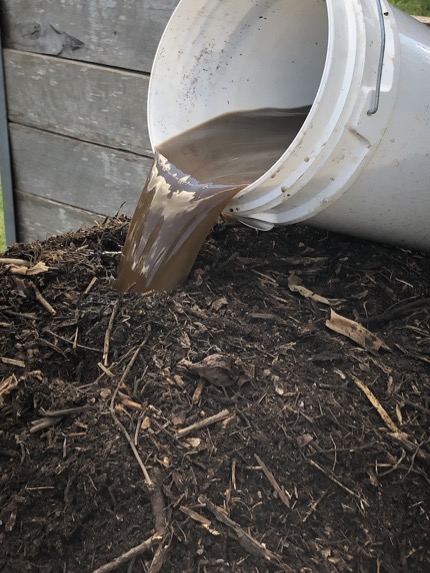
Our Biodynamic workshop last weekend with Hamish Mackay and Charlie Arnott was simply filled with information….our attentive participants’ minds were whirring away with so much to take on board. It’s all a bit of a mind explosion first time around, but as Charlie says….if you apply the principles, they soon become the ‘new normal’. Between the two of them, he and Hamish have so much proof of the benefits derived from following the principles that there’s little sense in not trying to apply them. I’m still finding the timing difficult to make work with my timetable, which I’m kicking myself about, but I intend to get hold of a calendar before the spring rotation, as well as some preparations, and make another stab at the whole process.
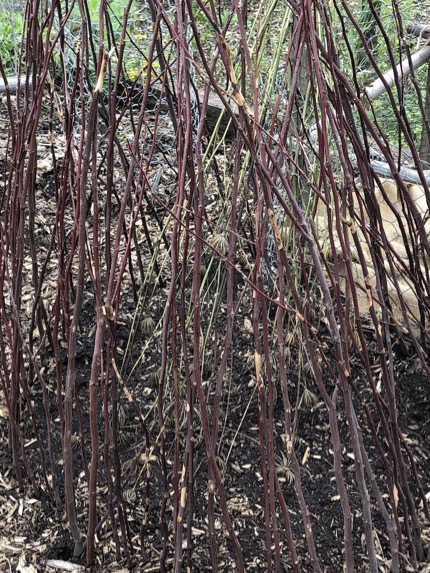
Over on the guild side, it’s been more a question of pulling out, than planting. For starters I ran out of compost, so I haven’t been able to do a great deal! But in a weak moment, I took a bundle of prunings from the espaliered fruit trees and marked out a random shape to sow seed of the purple flowering carrots I was so enamoured with last year….then I tipped some of their spent stems in for good measure. Now, I watch and wait….

All the seed of those incidental leaves that I grow in abundance through the cool months has been stored since I collected it, during spring and summer, down in the cellar. Now it’s time to bring it to the surface!
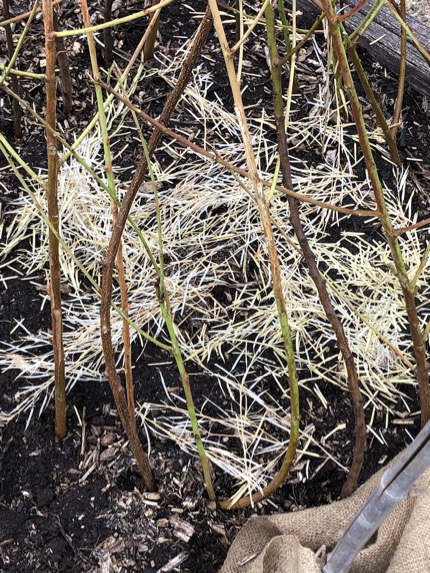
So far, aside from the carrots, I’ve only managed to get the Red Elk seed in, and they’re already up and away! Not much is really likely to attack this mustard leaf, but I use the twig enclosures anyway, just to demarcate the area where I’ve sown seed (and I rather like the aesthetic it creates). And with a crop like this, that I expect to come up in a thicket, I often just toss the whole seed heads in, as a means of lightly covering the earth…finer than mulch, nevertheless, it covers the soil.
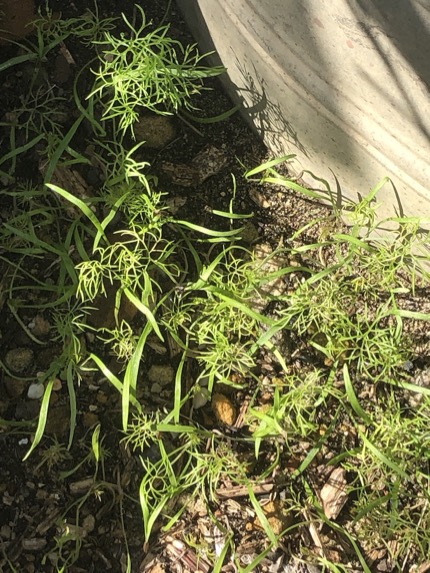
Sowing fennel seedlings for a quick crop, is not something I need to worry about!
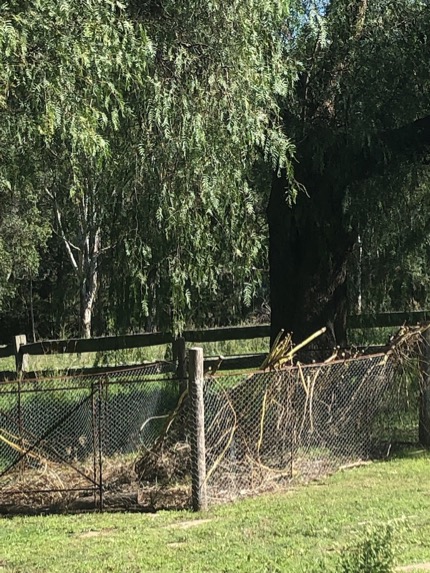
Although I am spilling it with wild abandon out in the wire bed, in the hope of creating an enchanting vision for…..
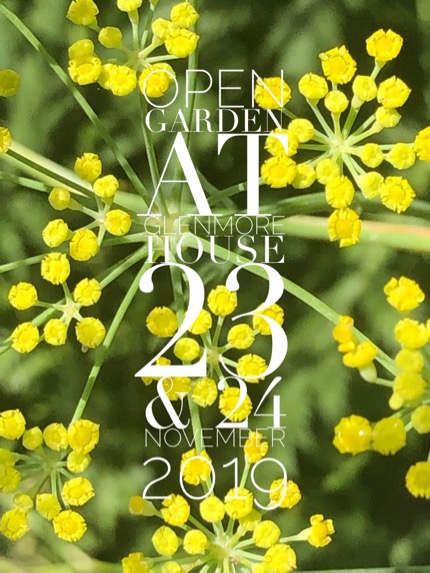
Yes….Open Garden on 23 & 24 November!
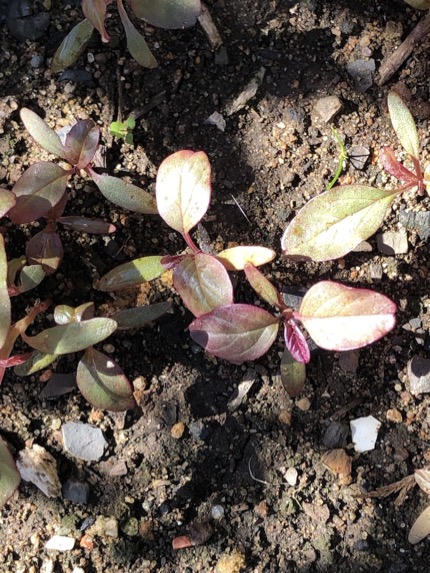
Leaf Amaranth too, is happiest left to do it’s own thing, favouring patches of poor soil to produce it’s pretty leaves. I make sure always to let several plants develop to full size, in order that there’s plenty of seed to spill (and when I say plenty of seed, I mean river loads….but it only ever seems to spill around its feet).

Here are the Jerusalem artichokes before the wind swept them all leeward! The flowers are going over now, but I won’t cut them down for several weeks yet…I always wait for the leaves to die back before I do.
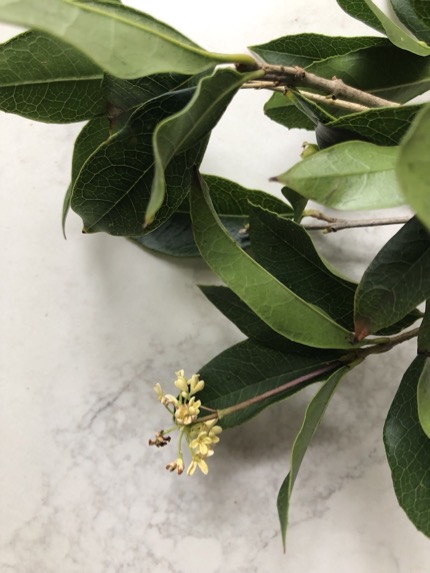
And to end, here’s an image of the intoxicating yet insignificant little flower of Osmanthus fragrans that I’m missing desperately. I’ve always thought the perfume like drowning in apricot nectar and it never fails to stop me in my tracks, wherever or whenever it crosses my path. Hopefully some of those cuttings will work!
So….’til next time, happy eating, planning and gardening!

| Going, going…… | fancy tomatoes, potatoes, grapes, lovage, fennel budlets (fresh green seed) |
| Eating…. | lettuce, sorrel, tomatoes, aubergines, capsicums, rhubarb, apples, figs, quinces, fennel buds and new seedlings, basil, salad burnet, lovage, chives, French tarragon, parsley, calendula petals, first shoot amaranth leaf, red elk, giant red mustard. |
| Sowing seed of…. | peas, broad beans, fennel, carrot, parsnip, beetroot, turnip, garlic (cloves), Australian yellow leaf lettuce, celery, rocket, red elk and giant red mustard. Sweet peas. |
| Planting seedlings of… | lettuce, fennel, coloured chard. kale, broccoli, cabbage, cauliflower, kohl Rabi, globe artichoke, leeks. Think about ordering bare root fruit….berries etc. |

